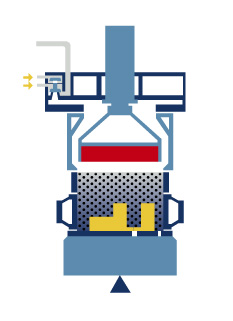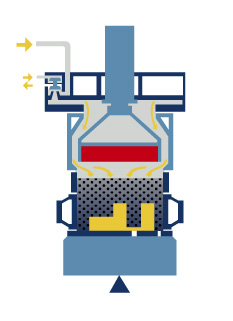Benefits of utilizing the horizontal flaske moulding process
- Horizontal moulding equipment can produce metal casting moulds suitable for most ferrous and non-ferrous metals. Pattern tooling is simple to make and can be easily changed between runs
- The flexibility and accessibility make it attractive for manufacturing a wide variety of castings in the short series and low volumes typical of jobbing foundries
- Horizontal green sand casting is well suited to grey and nodular iron castings, as well as steel, aluminum, and other non-ferrous metals. Patterns made of plastic, wood, and metal can be used
- It is widely applied for automotive castings like engine blocks, suspension parts, and brake discs. Other common applications include gearboxes, stator housings, compressor housings, and pumps




